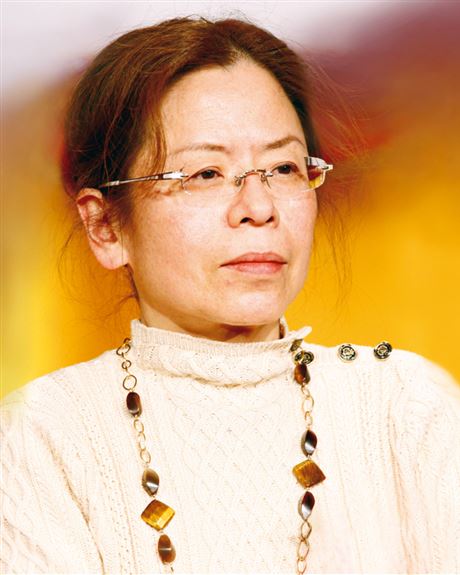A swarm of characters, an unorthodox structure, and slow-moving, ultimately irresistible suspense distinguish “Lady Joker Volume One,” the first novel by Kaoru Takamura to be translated into English. Published in Japan in 1997, “Lady Joker” immerses the reader— particularly the Western reader — in unfamiliar worlds as Takamura accumulates the psychological detail that makes so many players on her sprawling platform absorbing.
Soho Crime ($28.95)
Inspired by the mid-1980s Glico Morinaga case, an extortion plot affecting major Japanese confectionery companies, “Lady Joker” tells of an attempt by a group of marginalized men with time and hatred on their hands. The target is Kyosuke Shiroyama, the phlegmatic head of Hinode Beer, the giant corporation the schemers want to topple. Shiroyama’s kidnapping and the response to it — both in the larger society and within Hinode — animate the second half of the book.
Like some novels by James Ellroy and Marlon James, “Lady Joker” is wildly ambitious in scope. But unlike those books, its tone is deadpan, almost reserved. Perhaps because this is a translation, “Lady Joker” isn’t about color or poetry. It’s a patient, inclusive and nuanced book about a culture that values calm and teamwork, even at the expense of the individual.
Takamura has written far more than a mystery. She has dug into the roots of contemporary Japanese society, including the country’s attitudes toward lower-caste Japanese known as burakumin, as well as zainichi Koreans who have permanent residency status. She builds four stages for her complicated, accretive saga: the track, the corporation, the media, and the police. She puts us in bars, boardrooms, on public transportation, in newspaper offices, in parks, in cop shops.
Takamura slips into her characters’ psyches gradually, spotlighting, among others, the tricky, suppressed cop Yuichiro Goda; Lady, the whinnying daughter of horse-racing fan Jun’ichi Nunokawa, one of the drivers of the scheme; and Shiroyama, the quintessential company man.
The first half is quite the setup. Not only does it involve development of the scheme, timing a ransom request to the unveiling of Hinode Meister, a brew the company hopes will generate great new business, it continually introduces new figures, like Shuhei Handa, a disillusioned police investigator who happens to be friends with Seizo Monoi, the dentist who hatches the plot.
“Shuhei Handa got off the train at Shimbaba Station and thought to himself, I must’ve stepped on something. Skipping the hassle of removing his shoe to check what it might be, he kept walking to Shinagawa Police Department and had run up only a few stairs when a grinding pain finally shot through his right big toe. Handa moved aside to the wall, took off his right shoe, and flipped it over.
“A shard of glass had pierced the worn-down rubber sole of his shoe.”
Like that shard, Handa’s conscience pricks him, but it doesn’t stop Handa from going rogue. Takamura touches on corruption at all levels, from the relationship between Hinode, a shadowy criminal organization linked to an ultranationalist political group, to the kisha clubs that pool and channel news in Japan. Lines blur, fidelities conflict, and slowly, Japan itself becomes a character. The “ country’s “fluff of democracy” puts Fumiaki Negoro, metropolitan desk editor at the Tokyo bureau of the Toho News, in despair.
“Lady Joker” is a deep dive into a society in flux, straining to accommodate individuality, even eccentricity. It’s powerful, but not perfect. Takamura takes the reader all over the country, and the geography can be distracting. In addition, many references are specific to Japan — footnotes in fiction are rare, but they might have helped here. Also, even as the second half of the book wound the story tighter, it seemed strange that the schemers who ruled the first half never reappeared. I expect they will, with a vengeance, next year.
And while Takamura takes her own sweet time homing in on the key players in this drama, the way she narrows them down bodes well for “Lady Joker Volume Two,” which Soho Crime intends to publish next spring. The ending of Volume One is a great cliff hanger.
Carlo Wolff is a freelance writer from Cleveland. His latest effort is co-writing “Trying Times,” the memoir of progressive Cleveland lawyer Terry Gilbert.
First Published: June 22, 2021, 10:00 a.m.
Updated: June 22, 2021, 1:18 p.m.












![Caste: The Origins of out Discontents by Isabel Wilkerson. (Photo credit: Joe Henson) © Joe Henson 2008 All Rights Reserved [#Beginning of Shooting Data Section] Nikon D700 2009/12/02 16:18:02.42 World Time: UTC-5, DST:ON Lossless Compressed RAW (12-bit) Image Size: L (4256 x 2832), FX Lens: VR 70-200mm F/2.8G Artist: Joe Henson Copyright: 2009 All Rights Reserved Focal Length: 130mm Exposure Mode: Manual Metering: Spot Shutter Speed: 1/125s Aperture: F/11 Exposure Comp.: 0EV Exposure Tuning: ISO Sensitivity: ISO 200 Optimize Image: White Balance: Preset manual d-0, 0, 0 Focus Mode: AF-C AF-Area Mode: Single AF Fine Tune: OFF VR: ON Long Exposure NR: OFF High ISO NR: OFF Color Mode: Color Space: Adobe RGB Tone Comp.: Hue Adjustment: Saturation: Sharpening: Active D-Lighting: Auto Vignette Control: Normal Auto Distortion Control: Picture Control: [NL] NEUTRAL Base: [NL] NEUTRAL Quick Adjust: - Sharpening: 5 Contrast: Active D-Lighting Brightness: Active D-Lighting Saturation: +1 Hue: 0 Filter Effects: Toning: Flash Mode: Flash Exposure Comp.: Flash Sync Mode: Colored Gel Filter: Map Datum: Image Authentication: OFF Dust Removal: 2009/12/02 13:30:43 Image Comment: (c)Joe Henson 2009All Rights [#End of Shooting Data Section]](https://9b16f79ca967fd0708d1-2713572fef44aa49ec323e813b06d2d9.ssl.cf2.rackcdn.com/300x_a1-1_cTC/Isabel-Wilkerson-2-1604593468.jpg)








